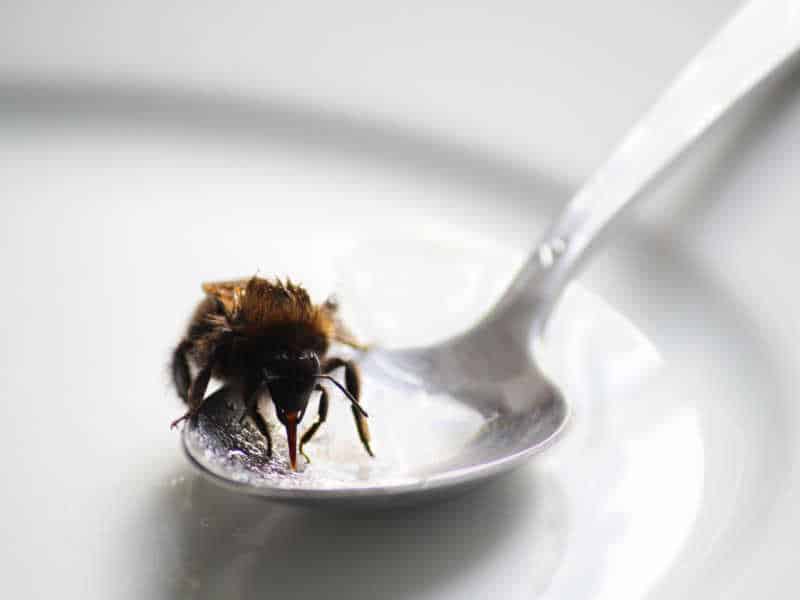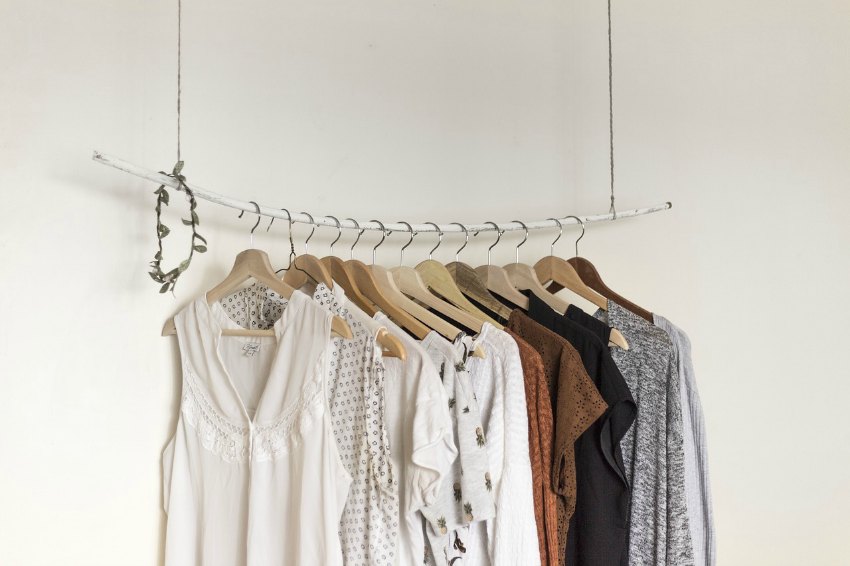Everything To Know About Castile Soap For Cleaning
To support the running costs of Moral Fibres, this post contains affiliate links. This means Moral Fibres may earn a small commission, at no extra cost to readers, on items purchased through these links.
Here is everything you need to know about castile soap for cleaning. From what this natural cleaning product is exactly, to the many uses of castile soap, where to buy it, and more.
Castile soap is an incredibly versatile type of soap, that has a whole host of uses around the home. In fact, one bottle of soap could replace many cleaning products in your home.
While you may have heard of this natural cleaning wonder, you might not know how best to use it. Don’t get in a lather – let me talk you through everything you need to know about using this soap for eco-friendly cleaning applications.
Everything You Need to Know About Castile Soap For Cleaning
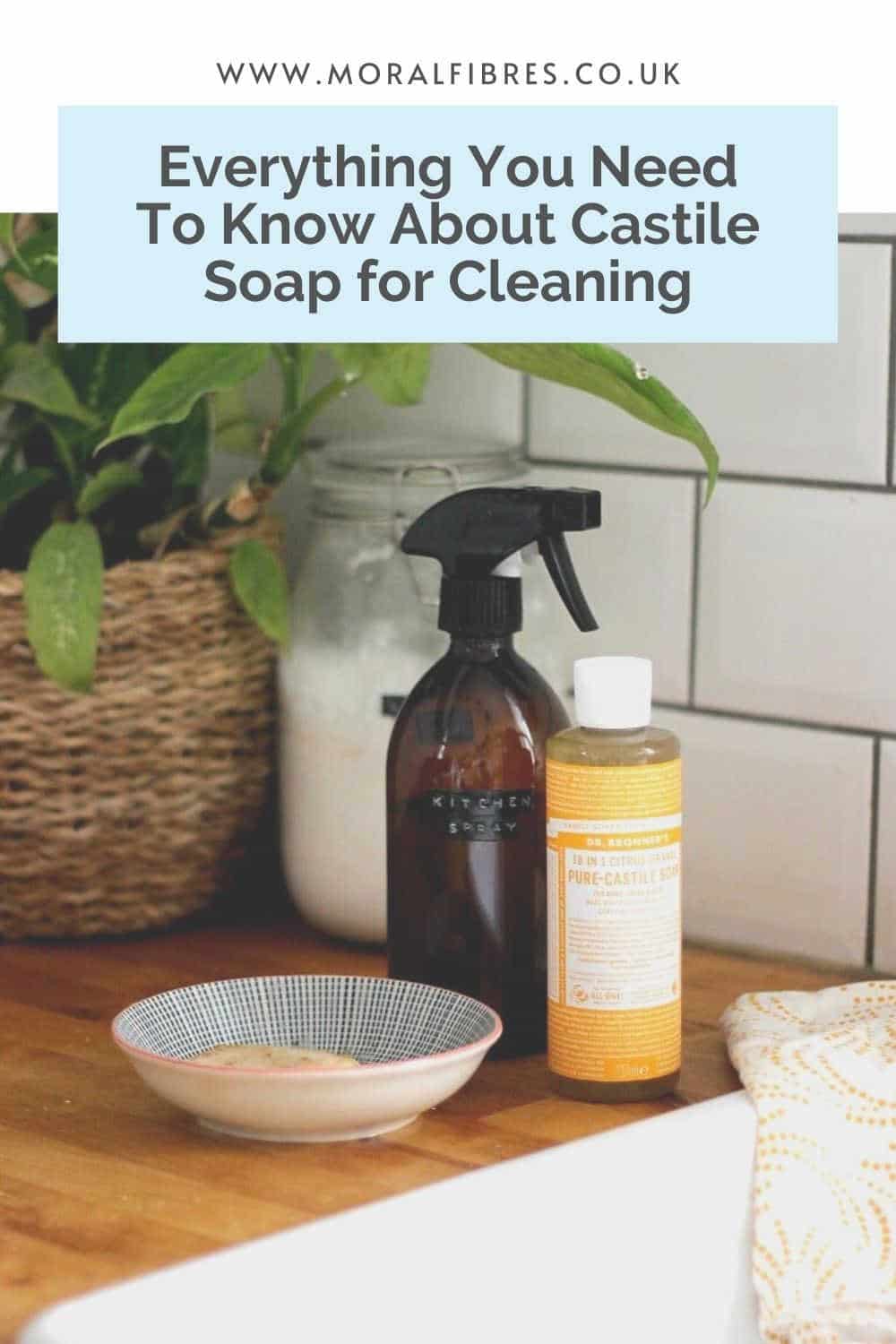
From what this wonder soap is, to how to use it, and what not to mix it with – here’s almost everything you could ever need to know.
What Is Castile Soap?
Castile soap is a vegetable-based soap that’s made without synthetic ingredients or animal fats.
Traditionally made from olive oil in the Castile region of Spain – hence the name – this non-toxic, natural, vegan-friendly, and biodegradable soap is available in bar or liquid form. Personally, I find the liquid form to be more versatile. However, with a little effort, you can melt bars down to form liquid soap, making solid soap bars a good option if you are looking to eliminate plastic from your life.
Whilst traditionally made from olive oil, the soap is increasingly being made with coconut oil. Occasionally you’ll find it made from castor, hemp, avocado, walnut, or almond oils. Whatever oil it is made from, it is these rich oils that give the soap its lathering and cleansing properties.
What Are The Uses of Castile Soap?
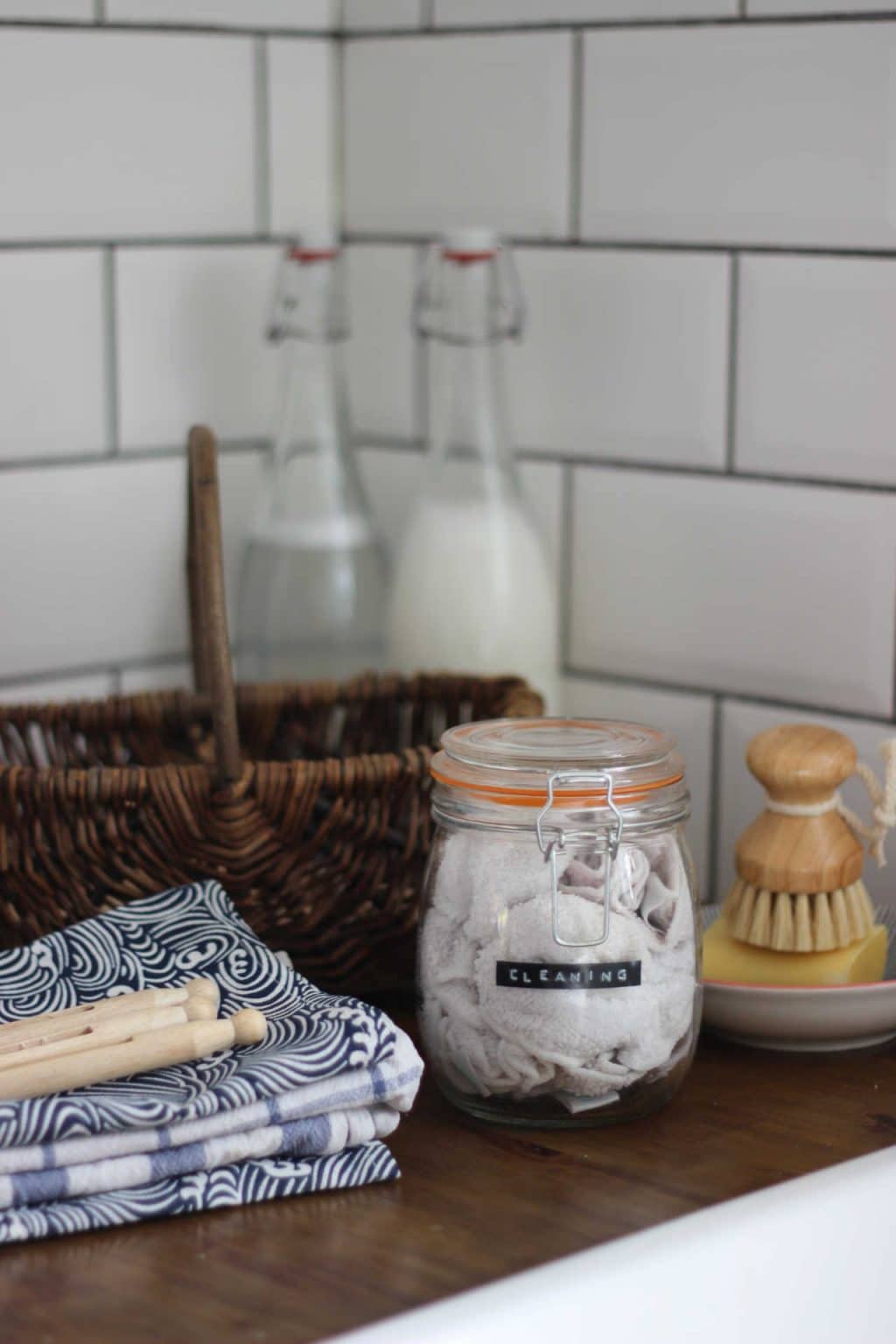
Liquid castile soap is very versatile and can be used in a huge variety of ways – from naturally cleaning your home to your body. You just need a small drop – the soap is only ever used highly diluted – so one bottle can go a long way.
For example, a tiny drop – just two teaspoons – makes this all-purpose DIY cleaning spray. This spray is effective in cleaning every nook and cranny in your home.
You can also make this stone-safe homemade cleaning wipes solution (pictured above). Again, this recipe just requires two teaspoons of soap.
Even your makeup brushes can benefit. This makeup brush cleaning solution requires just one teaspoon of soap for naturally clean brushes.
I also use it to make liquid hand wash, floor cleaner, and laundry powder, among many other uses. For these recipes, and lots more uses for castile soap – try Fresh Clean Home – my book on how to make your own natural cleaning products.
Not convinced? Dr Bronner’s – the main brand when it comes to castile soap – claims their soap is an 18-in-1 product. They say you can use their soaps for washing your face, body, hands, and hair. You can also use their soap for brushing your teeth, shaving or for bathing, and for aromatherapy.
But it doesn’t stop there. You can also use their soap for rinsing fruit, washing dishes by hand, doing laundry, mopping floors, for all-purpose cleaning, washing windows, and scrubbing toilets. They even say you can use their soap for washing dogs, and controlling dust mites, ants, and aphids. Phew. It’s a lot of uses. Check out all 18 uses for castile soap if you remain unconvinced!
Is It A Disinfectant?
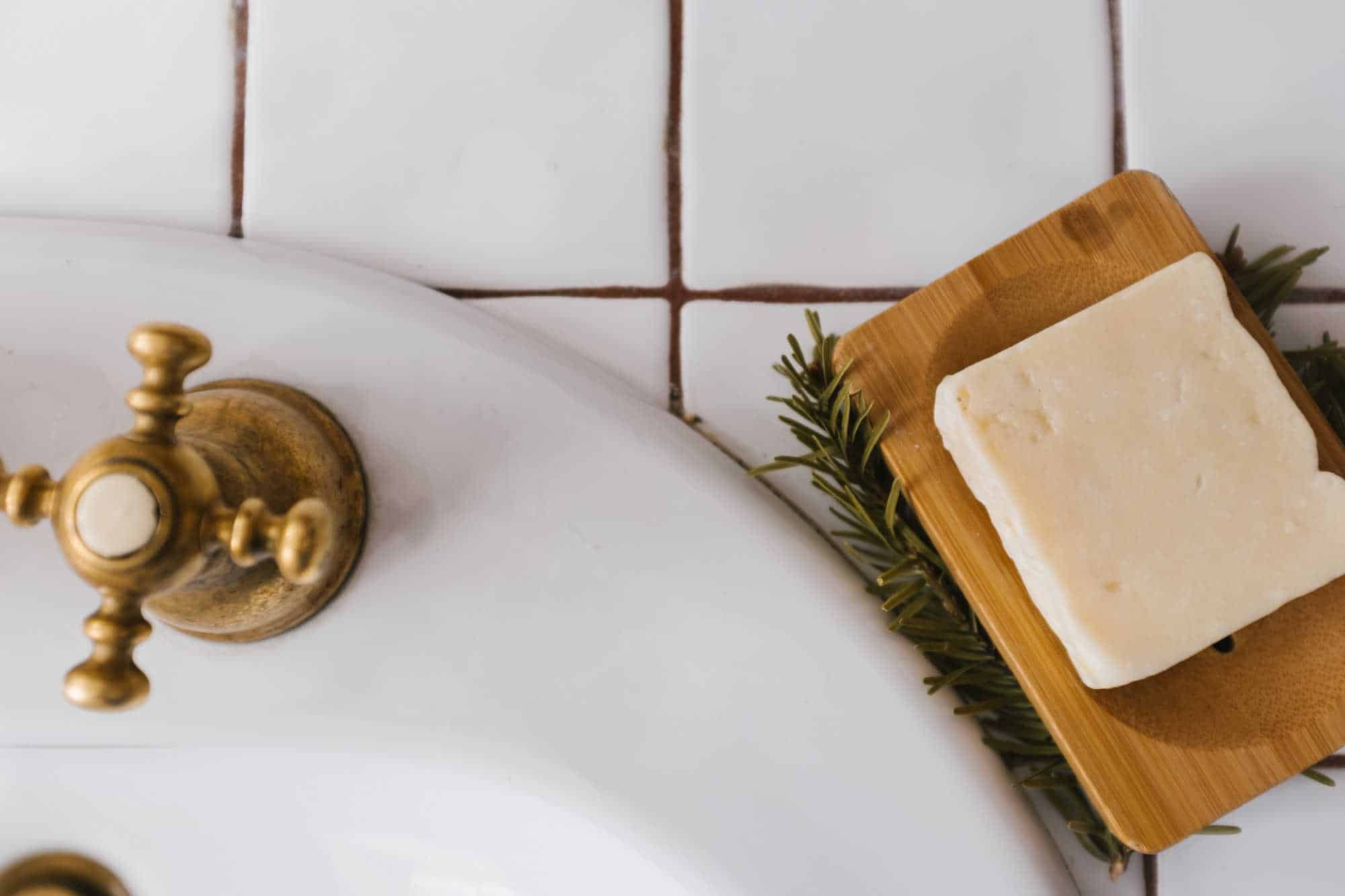
Castile soap is a cleaning agent. It acts as a surfactant. This means that when you wipe a surface with soap and water, it removes dirt and grease, as well as germs and bacteria from surfaces. Like most cleaning agents, these surfactants don’t kill germs – it just allows you to wipe them away.
Soap surfactants like this work because soap molecules have grease-gripping properties. When mixed with water, these molecules attract and capture dirt and other types of non-water-soluble molecules.
Soap and water are generally enough to clean most of your home and keep you and your family healthy. Public health bodies recommend that soap and water are effective when washing our hands to prevent spreading germs. The same is true of our homes.
Antibacterial or disinfectant products, on the other hand, aren’t cleaning products. They don’t clean anything. They kill germs but don’t necessarily remove them. There are also concerns that overuse of antibacterial products can contribute to the rise of bacterial resistance to antibiotics, so it is best only to use these products when necessary.
Antibacterial or disinfectant products are useful when you want to clean surfaces where raw meat has been prepared, or for cleaning hard surfaces when someone in your household is unwell. In this case, then soap is best used in tandem with an antibacterial spray to kill any lingering germs. I like using these plastic-free refill anti-bacterial sachets (from Big Green Smile) for no-fuss zero-waste germ-killing.
What Shouldn’t You Mix?
Don’t mix castile soap with acidic natural cleaning products such as vinegar or citric acid. This is because castile soap is alkaline. If you can remember from school science lessons, when you mix an acid with an alkaline a chemical reaction occurs and a new substance is made, or you end up with a neutral solution.
In the case of mixing castile soap with vinegar, the reaction neutralises both, reverting the castile soap back to its original oils.
In simple terms, if you mix castile soap with an acid, you’ll notice the castile soap curdles. It will also feel very oily. If you use it on your hands or on any surface, you’ll notice that it leaves a white film that is very difficult to remove.
If you want to get fancy, this oily curdled outcome is called unsaponified fat. This means the vinegar has reverted the soap into its raw materials. Castile soap isn’t much use in its raw material state, so I wouldn’t recommend mixing it with acid.
If you do want to mix soap with vinegar, use washing-up liquid instead. Washing-up liquid is much less delicate and can withstand being paired with vinegar.
Where to Buy Castile Soap
Castile soap is easy to find. Find bottles in most health food stores, or buy online. Check out my guide on where to buy liquid castile soap for a quick run-down on all the best places.
Don’t have time to click? You can buy branded Dr Bronner’s liquid castile soap at Big Green Smile in a variety of sizes and scents. These range from 60 ml if you just want to try it out, all the way through to 3.8 L bottles.
If you would prefer unbranded and unscented soap, then try Etsy’s selection. Here you will find unbranded and unscented soap at a lower price point. If you are using it for making your own cleaning products, then you can add your own scent with essential oils.
For solid soap bars, you might be able to pick these up in health food stores or some larger supermarkets. Online, try Sephora UK, which has a large selection.
Got any more questions that I haven’t answered here? Leave me a comment or drop me an email and I will aim to update this post with your question and answer.
Looking for more green cleaning inspiration? Check out my ultimate guide to making your own natural cleaning products.
Found this post useful? Please consider buying me a virtual coffee to help support the site’s running costs.



